Disclaimer: This post contains affiliate links to handpicked partners, including tours, gear and booking sites. If you click through or buy something via one of them, I may receive a small commission. This is at no extra cost to you and allows this site to keep running.
Destroyed in WWII and occupied in the Cold War, a day trip to Potsdam from Berlin is crucial in understanding the history of the region, and an insight into how a city can reinvent itself after conflict.
Potsdam automatically became a focal point of the Cold War because of its close proximity to the occupied zone of Berlin and the fact that it became part of the West Berlin / East Germany borderline. To visit Potsdam today is crucial in understanding this history.
Once the former royal seat of Prussia and military stronghold under King Frederick the Great, the grand heritage of Potsdam was either destroyed by war or became out of reach when occupied by the Russians as part of the newly formed German Democratic Republic (GDR).
Rebuilding its legacy, today Potsdam retains its title as Berlin’s “posher sister” – it’s once cultured, refined and extravagant persona beautifully restored after the fall in the wall and demise of the communist occupation in 1989.
Contents
History of Potsdam – WWII and Cold War
Bombed by the same air force that destroyed Dresden in the second world war, 80% of Potsdam’s 300-year-old city centre succumbed to the fatality of war, especially the Old Market Square area where the original City Palace and St. Nicholas Church sat.
During the Cold War, the Soviets only rebuilt some central residential buildings in the same style, although later gave up with the influx of eastern Europeans to Germany and most notably Potsdam, hence the sporadic concrete high rises.
The outskirts of the city, such as the parks and palace grounds, remained intact and untouched. This is because much of it was off-limits to citizens and not a priority for the Russians to demolish.
Potsdam Post-Occupation
Post occupation, Potsdam underwent grant restoration, leaving twelve palaces with their landscaped gardens and beautiful woodland, World Heritage status parks and grand Prussian architecture within the city that blend as one. It’s no wonder it’s dubbed the countryside on Berlin’s doorstep.
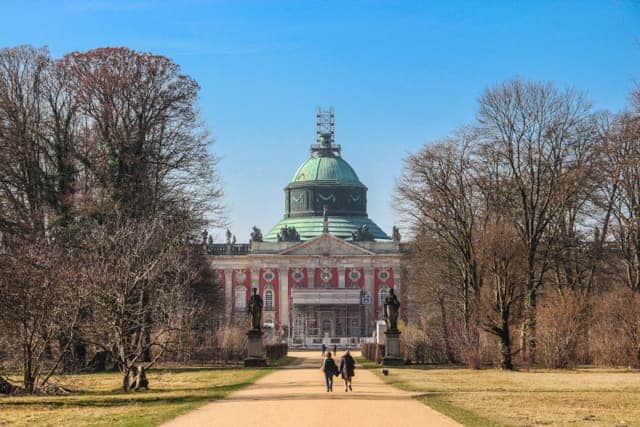
Berlin to Potsdam – The Bridge of Spies
Being Berlin’s neighbour came at a price. An ‘island’ completely surrounded by water, Potsdam’s riverside became the designated route of part of the Berlin wall, stretching over a length of 160 kilometres.
The famous Glienicke Bridge, more well known as the Bridge of Spies from its movie namesake, became a key sector border between West Berlin and the GDR/East Germany. This bridge became well known for its exchange of agents, military and diplomats belonging to both political systems.
You can cycle the wall trail retracing the course of the wall, where border towers and crossing points remain. At the Glienicke Bridge, you can cycle along it for a few minutes and officially be in Berlin when you reach the other side, before turning around and returning to Potsdam.
It’s hard to believe that this thoroughfare between two cities was once a part of the Iron Curtain.
Potsdam Today
Potsdam remembers its past but proudly looks forward. Now, open parks and their landmarks such as Sanssouci Palace and the Marble Palace tell the glory of Prussia while the Palace of Cecilienhof (where Truman, Churchill and Stalin met in 1945 to decide the future and division of Germany) tells the story of post-war via its museum wing.
Old Russian school buildings are being used as modern classroom space, the Stassi prison is now open to the public as a documentation centre and former bland GDR architecture (although very sporadically scattered) has been refurbished in a modern retro style.
Local houses, once taken over by Russian soldiers, are now back to being prime real estate.
Proud of its heritage yet keen to display its modern reinvention as young and dynamic, Potsdam’s old city palace was rebuilt in similar style yet not for the same purpose. Housing the Parliament of Brandenburg since the end of 2013, it displays the words “Ceci n’est pas un chateau” – ‘This is not a palace.’
In the adjacent Babelsberg neighbourhood are the ‘Babelsberg Studios’ – the home of film production, where leading films including The Bourne Ultimatum, Valkyrie and Inglourious Basterds were produced.
The central heart of the city bustles with life, from café culture to fine dining, street performers to creative galleries, awash in the glow of architectural beauty that Potsdam was always known for.
Potsdam is nostalgic but progressive, tainted by a troubled past but eager to assert its original identity as a key German city.
Potsdam rebuilt itself and in parts, remodelled, but whether you rejoice in the heritage or lament the remains of the brutal history, there’s no denying that Potsdam is an incredible place to visit, even if only as a day trip from Berlin.
See More of Former East Germany
Want to learn more about former East Germany and how the towns and cities are today? Why not combine your trip to Potsdam with one of these other historical places?
What to See in Weimar– Complex History and Cultural Acclaim
Things to Do in Erfurt – From Socialist Rule to Stunning Restoration
What to Do in Leipzig – A Stylish Past and Urban Reinvention
What to do in Dresden – The Old City With a Trendy Alter Ego
Potsdam was the second stop on my ‘Fall of the Wall’ trip to former east Germany towns and cities in conjunction with the German National Tourist Office, to look at modern Germany and how it’s changed since reunification. All opinions remain my own, including my passion for architecture and post-Soviet history.

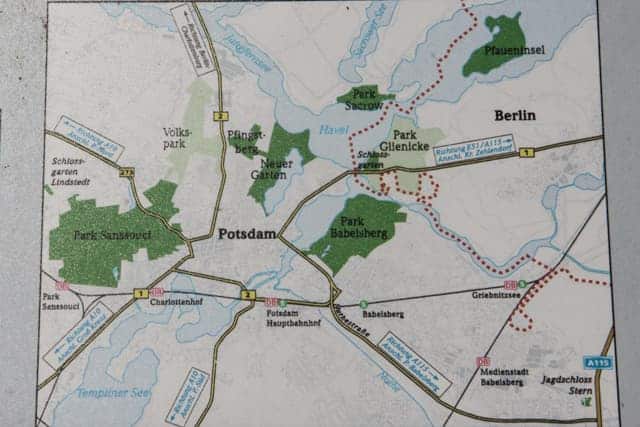

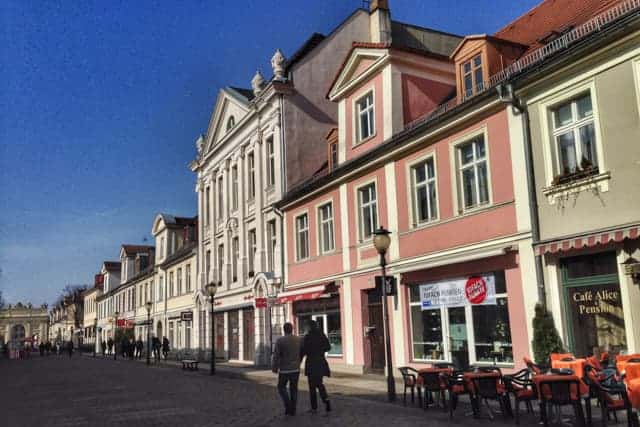
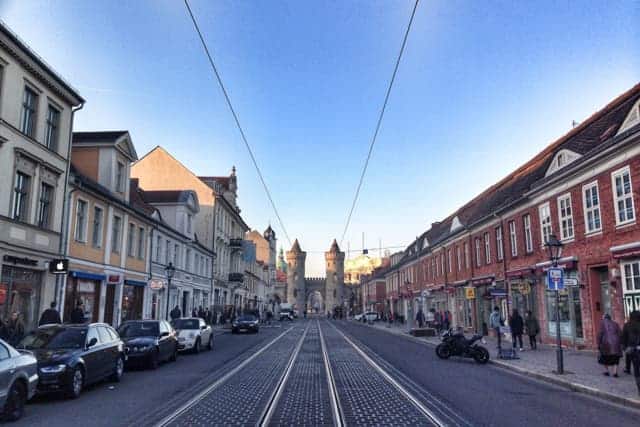
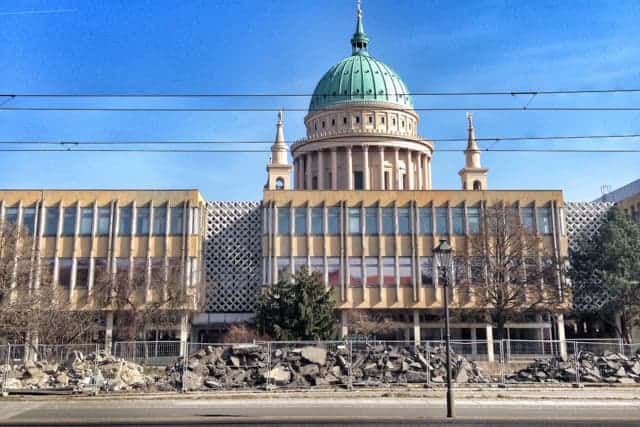
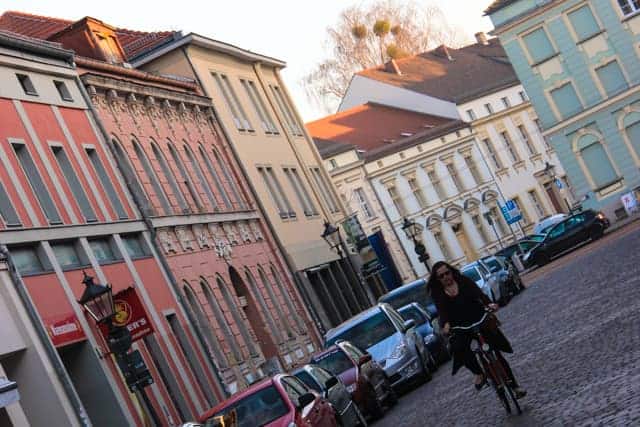
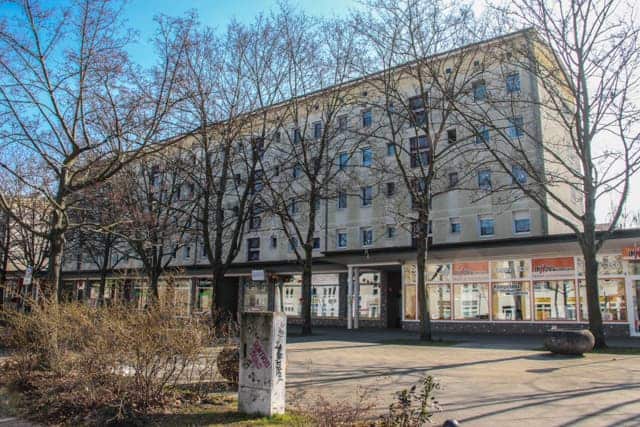
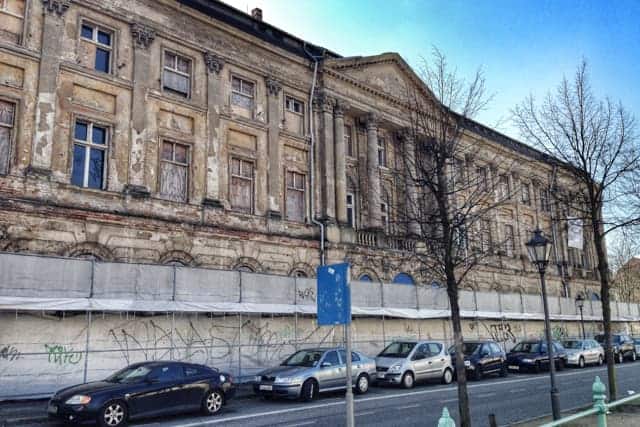

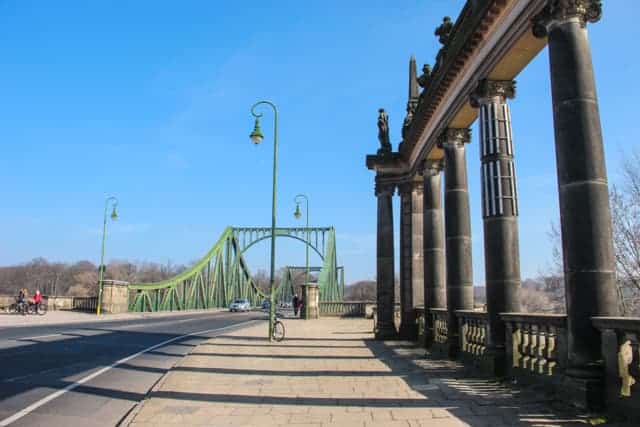
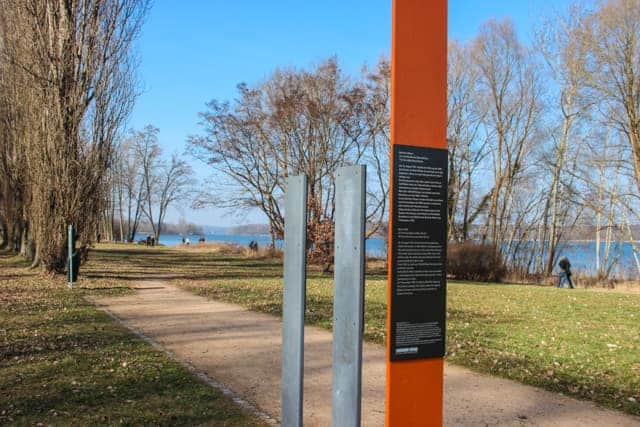
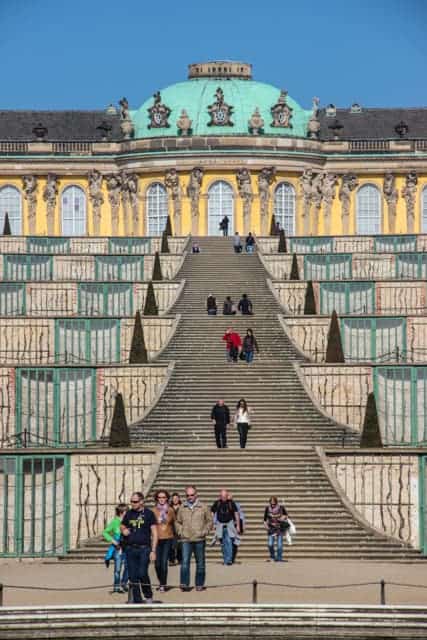
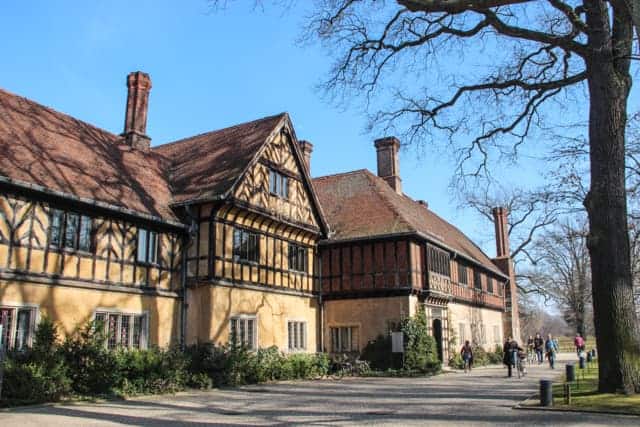
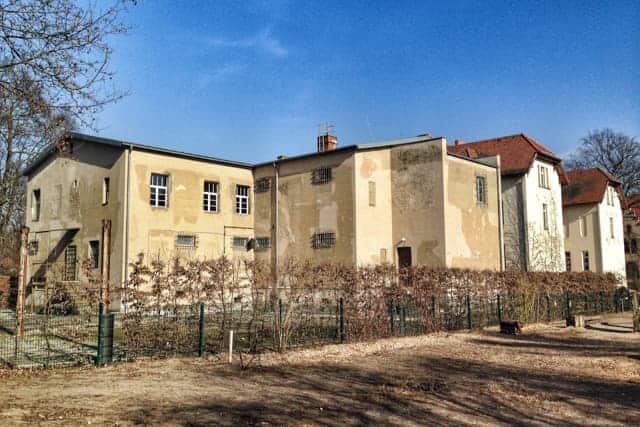
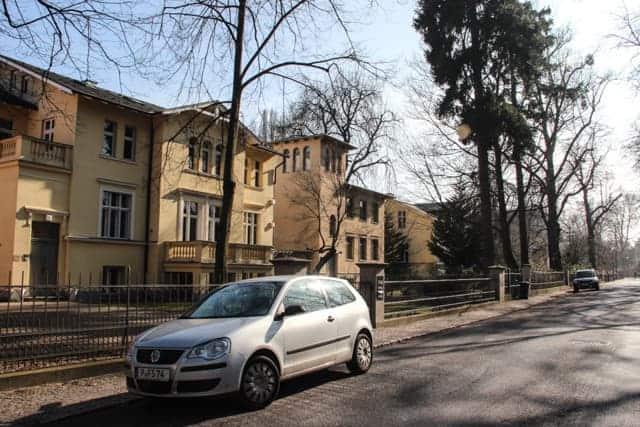
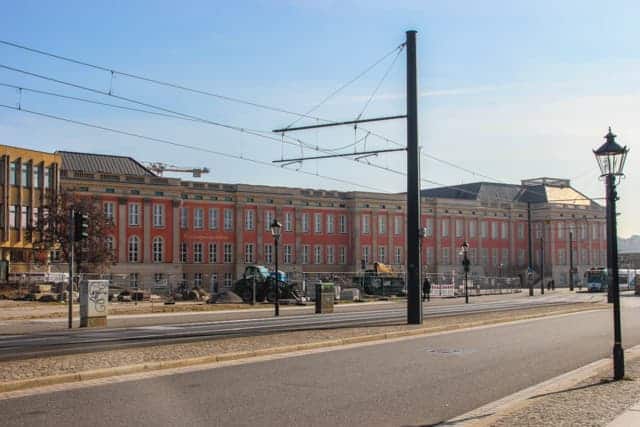

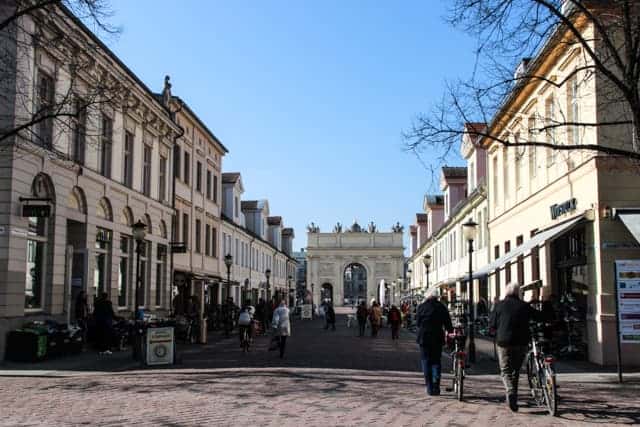
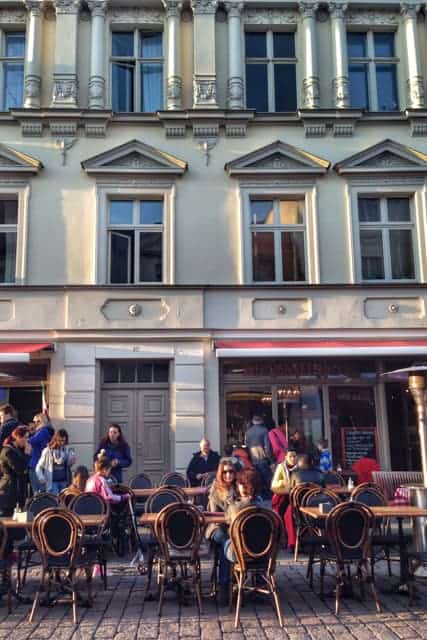

Kirsten Keith says
I visited Potsdam today with my 17 year old. We were so impressed with the history and renovation of the New Palace. I could easy spend a week here and it is s must see if you are in Berlin. I can’t wait to return in 5 years to see the renovation. It will be as beautiful as Versailles but without crowds until its discovered.
James says
I’ve been living in Potsdam for the last 10 months, and it’s chock full of history. It’s also a great place to live, much cleaner than Berlin. I really enjoy all the parks and greenery around here, since I used to live around New York.
The people of Potsdam are proud and very welcoming as well. It’s interesting to note since the Russians were so prevalent here for many years, a lot of the older people in Potsdam speak German and Russian. You’ll have an easy time finding young people who speak English. – Just an interesting quirk about the area.